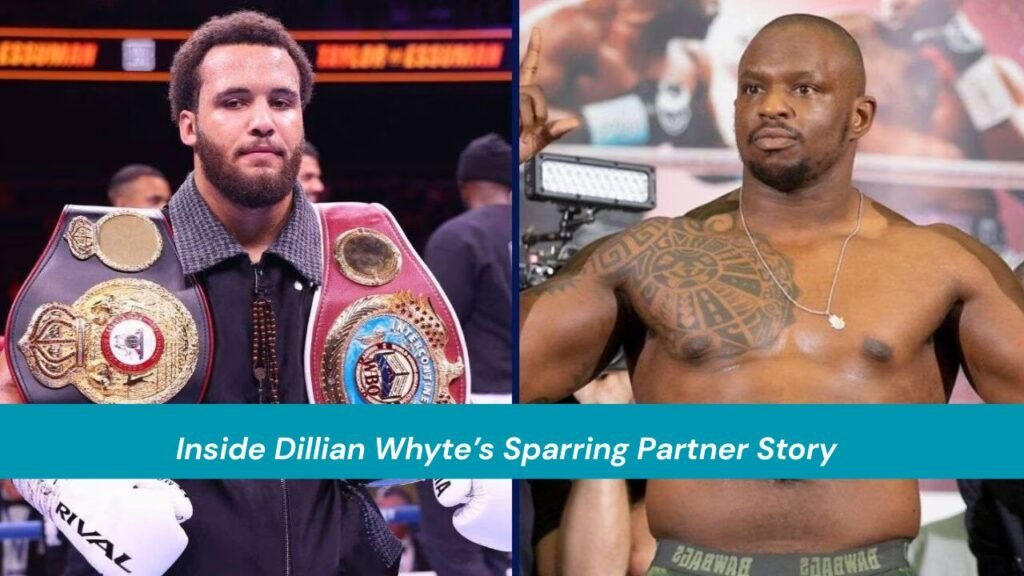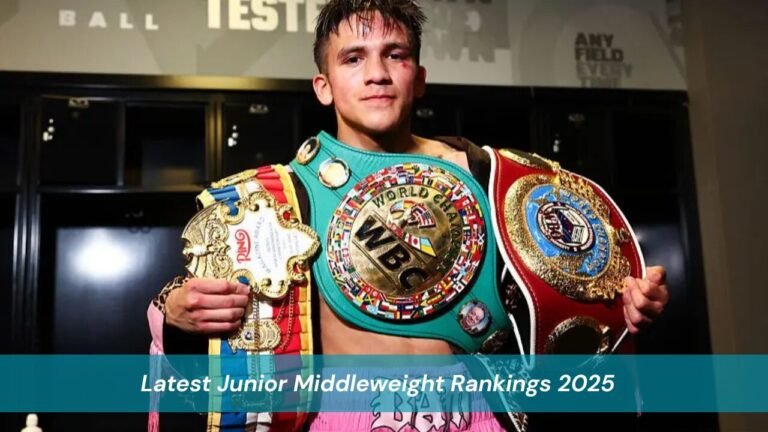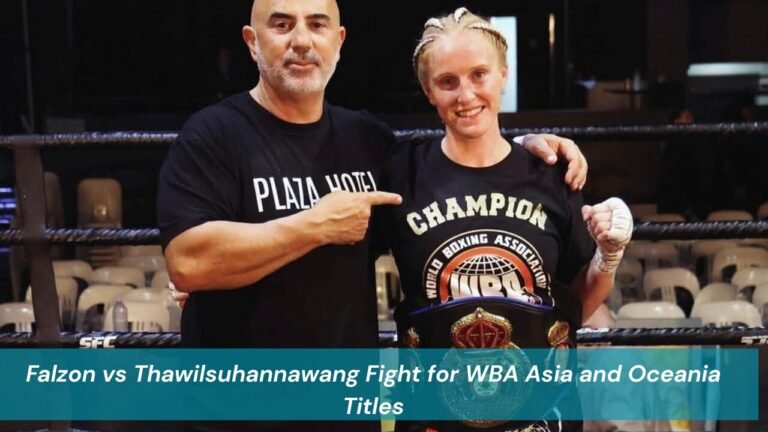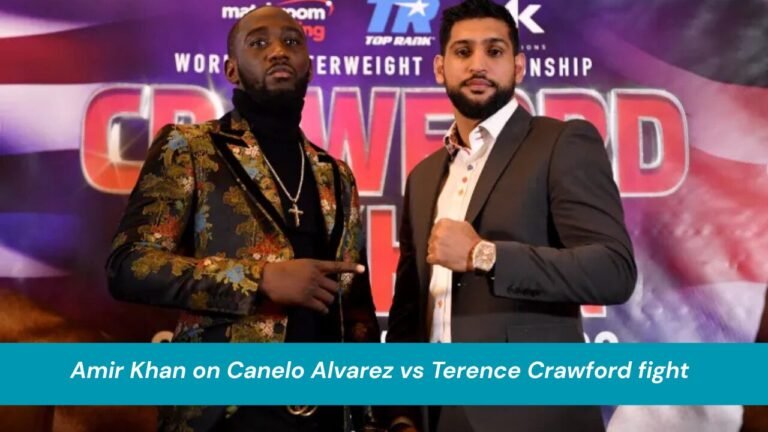Imagine the grind of a boxing gym: sweat, thudding leather, and the fierce motivation to become stronger, faster, better. Now picture Dillian Whyte nicknamed “The Body Snatcher” entering that ring repeatedly with a sparring partner who, in Whyte’s own words, used to “punch holes” in him. That vivid phrase conjures images of raw, punishing energy and a teacher unwilling to go easy. It’s precisely this intensity that sculpted one of Britain’s fiercest heavyweights. In this article, we explore the powerful role of that Dillian Whyte sparring partner, how the relationship shaped his career, and why it matters now as he prepares to face Moses Itauma in Riyadh. Along the way, we weave in expert insights, fresh angles, and a full FAQ to bring clarity and depth to this story.
Early in his career, Whyte encountered Mike Perez, then a formidable contender who became more than just an opponent in the gym. These sessions may have cost Whyte more than bruises; they became a crucible that forced him to evolve mentally and physically. Years later, as Whyte stands on the brink of another title shot, that same sparring partnership has reemerged, offering renewed insight and steel.
Early Formation: How a Young Whyte Learned from Pain
Dillian Whyte’s journey from Prospect to contender was anything but easy. At twenty-seven, early in his fledgling career, he partnered with Mike Perez, the Cuban-born heavyweight whose style and physicality were far beyond what most young British fighters faced at this stage. Whyte recalls, “Mike was punching holes in me back then. I had no experience. But they would pay me like 500 bucks to spar with him at the time. I was like, ‘Damn, I’m going to come here every day.”
Whyte’s willingness to return day after day to these punishing sparring sessions speaks to both his hunger and the unique value he found in being “punched holes” into. It was brutal, but it was also formative painful conditioning that pushed his boundaries physically while building muscles of perseverance and adaptation that would define his style later.
Reconnecting a Decade Later Purpose and Partnership Renewed
Fast-forward to August 2025. Whyte, now thirty-seven, is preparing for a high-stakes bout against Moses Itauma, a rising 20-year-old southpaw. Whyte’s eyes turned back to Perez not out of nostalgia, but necessity. “I’ve known Mike since 2015 when I first started getting into boxing,” Whyte said, offering insight into why this reconnection felt natural. “Mike was one that supported me back then. He was looking for guys to spar with at the time… We linked up again in the future because his career slowed down and he needed some opportunity. And I said, ‘You know what? Yeah, I can help you out.’”
What was once one-directional has become reciprocal: Whyte gives Perez a chance to benefit from his platform, while Perez brings unmatched veteran savvy. That’s the essence of trust and mutual respect cornerstones of any exceptional partnership.
Sharpening Tools Technical, Mental, and Tactical Gains
When two fighters go back into the ring after years apart, something deep and meaningful is often reignited. In sparring sessions, Whyte finds himself not only tested physically but reminded of how skillful, seasoned opponents exploit openings, how they observe, anticipate, and respond. Perez, as Whyte notes, “[has] skills,” and more than 500 amateur fights behind him. That pedigree translates into an invaluable resource in Whyte’s camp.
Perez’ presence is not merely a punching bag; he’s a mirror reflecting Whyte’s rhythm, timing, and defense. He critiques Whyte candidly, “Bro, you’re messing about. You need to do this, you need to do that.” That kind of honest, constructive feedback from someone older and battle-tested is priceless in a sport where weakness hides beneath the surface.
An Unsung Architect The Importance of Sparring Partners in Heavyweight Boxing
In boxing, sparring partners are often overshadowed by the fighter’s polish or the promoter’s promises. Yet the truth is sparring partners are the unsung architects shaping readiness. They simulate danger, expose flaws, and with every jab, hook, and body shot, force the fighter to recalibrate. For someone like Whyte, whose power defines him in the ring, shaping that power to be accurate and strategic depends on facing quality resistances like Perez brought.
When that sparring partner is tall, southpaw, skilled, and relentless like Perez, the lessons multiply. Especially preparing to face a southpaw like Itauma, sparring with Perez, also a southpaw, offers an invaluable rehearsal where angles, evasions, and pivoting become muscle memory.
Fresh Perspective What the Modern Fan Might Miss
Competitor articles understandably focus on overflow quotes or the novelty that Perez rejoined camp, but seldom delve into the why behind the why. What is missed in surface analysis is how reconnecting after a decade embodies a cycle of learning, aging, and humility. Whyte isn’t clinging to youth; he knows that as his clock advances, experience becomes his weapon.
Perez’ role is twofold: one, to remind Whyte of the challenges that forged his early resilience; and two, to introduce ground-and-pound precision earned over years in the ring. This marks the difference between strength and wisdom in the heavyweight game—a theme underexplored on prevailing platforms.
Risks and Rewards Trust Through Wear and Tear
Pushing too hard in sparring can lead to injuries or mental fatigue. But Whyte and Perez’s relationship minimizes those risks through experience and trust. Perez isn’t going to accidentally smash Whyte into danger; he’ll test him, but he’ll do it consciously. Since rejoining Whyte’s camp, Perez has already emerged from a 14-month layoff to deliver a 34-second knockout and later a 9th-round TKO proof that the partnership benefits them both, not just Whyte.
A Deeper Look Whyte’s Evolution and Perez’s Gift
When he first sparred Perez, Whyte was raw hungry, but green. Perez’s “punching holes” forced him to adapt or perish. That era taught Whyte to absorb, counter, and advance under pressure. Now, returning to that same crucible, Whyte is testing a new version of himself—a contender sharpened by titles and losses alike.
Meanwhile, Perez gains relevance again. His knockout performance post-layoff proves that sparring with Whyte isn’t just about delivering punishment; it’s about staying competition-ready. That symbiosis captures what makes boxing unique: the mutual way fighters elevate each other, even in rival rings.
What Experts Say About Sparring’s Role in Preparation
Research and modern boxing wisdom emphasize that realistic sparring scenarios drive readiness. Fighters who spar smart, spar often, and spar with diverse styles—southpaws, switch-hitters, power punchers—report being better adjusted when the bell rings for real. In heavyweight divisions, where a single punch can end a career, simulation training with disciplined partners is essential. Keith Thurman, Floyd Mayweather, and others have frequently credited specific sparring partners for tilt-point breakthroughs during training camps. Carefully curated sessions help solidify reflexes and fine-tune defense under duress.
FAQ
Who was Dillian Whyte’s sparring partner that “punched holes” in him?
Mike Perez was the man in the ring with Whyte nearly a decade ago, when Whyte, still early in his career, would spar Perez for £500 per session. Perez’s power and precision made Whyte’s skin toughen fast and formed the foundation of his readiness.
What does it mean to “punch holes” in a sparring partner?
To “punch holes” figuratively means to expose flaws sharply and consistently to land clean, telling shots that force the opponent to see and fix weaknesses. In Whyte’s recounting, Perez wasn’t sparring lightly; he was training to hurt, to teach, and to test Whyte’s mettle.
How does tough sparring improve a fighter’s readiness for actual fights?
Tough sparring helps fighters adapt to adversity. It trains reaction timing, defensive awareness, and endurance. Facing someone like Perez with experience, skill, tactical awareness, and southpaw stance pushes Whyte to anticipate, adjust, and respond under realistic pressure, essentially replicating what might happen in the ring on fight night.
Is there a risk in sparring too hard?
Yes, excessive force or overtraining can lead to injuries, burnout, or diminished confidence. However, experienced sparring partners like Perez mitigate these risks by balancing challenge with control, knowing when to test and when to step back. Their mutual respect and alignment of purpose make the sessions both safe and transformative.
Pulling It All Together Why This Partnership Matters Now
As Whyte prepares for his DAZN Pay-Per-View main event in Riyadh against rising southpaw Moses Itauma, this reactivated partnership serves multiple functions: sharpening his edges, exposing gaps, and reinforcing confidence. Whyte’s openness to honest feedback from a seasoned peer who once dominated his interior guard reflects maturity and trust rarely broadcasted in typical fight lead-ups.
This isn’t about nostalgia; it’s about leveraging what made him better in the past to sharpen the man he has become today. If Whyte can translate Perez’s precision-driven critique into cage-hardened execution, he could find himself back in contention for a world heavyweight title.
Conclusion
What began a decade ago in a gritty gym turned into a formative ordeal for Dillian Whyte and today has become a strategic advantage. There’s an artistry in being “punched holes” into by a veteran, especially when that sparring partner returns with experience, respect, and relevance. Perez’s influence on Whyte’s career trajectory can’t be overstated: from raw youth to mental refuge, to potential springboard back to the elite.
As Whyte stands across the ring from molecules of raw potential like Moses Itauma, that partnership may define how well he succeeds. If you’re drawn to behind-the-scenes training dynamics, combative psychology, and boxing’s nuanced preparation rituals, stay tuned subscribe for more insider stories unraveling the journey from gym brutality to championship glory. Visit Boxing Essential to explore more.




